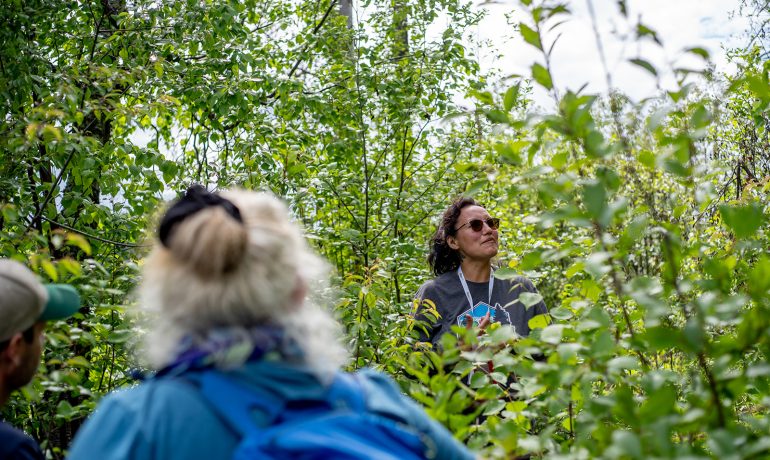March 23, 2016 The Valley Voice
by Art Joyce
When it comes to our community forests, when do good intentions go bad? According to the BC Community Forest Association’s (BCCFA) report Community Forest Indicators 2015, “community forestry is an innovative form of forest management which provides local communities with the right to manage local forests for local benefit.”
This certainly was the intention behind the creation of community forest legislation in BC. But how has that worked out in practice? How is it, for example, that a community forest can end up logging or even damaging its own watershed, or logging an area that contains endangered species? How is this an improvement over industrial forestry? And what are the gaps in current legislation that allow such conflicts of interest to happen? How do we measure the impacts of community forests on our landscape?
These are the kinds of questions we’ll ask in our series on community forests. In the coming weeks we’ll profile all the community forest tenures in the West Kootenay – Harrop-Procter, Kaslo, Nakusp, and the Slocan Valley.
The BCCFA tracks and measures the benefits of community forests in the province, working with the Ministry of Forests, Lands and Natural Resource Operations (FLNRO) and independent advisors to identify “the tangible social, cultural, economic and environmental benefits that community forests bring to their communities and to Community Forests
part 1: How are they doing? the province.” The Community Forest Indicators 2015 report was based on data compiled from 31 community forests, representing 84 percent of BCCFA members. “For the most part, these are small rural communities with an average population of 3,300,” the report notes. Of these, 32 percent were communities of under 1,000 – which fits most West Kootenay villages. Most community forest tenures average an Annual Allowable Cut (AAC) of 30,400 cubic metres.
Among the top indicators in the BCCFA report are economic benefits to communities. On average, community forests create 0.3 fulltime jobs per 1,000 cubic metres in forestry, logging and support services – 50 percent higher than the industry average. That said, HarropProcter Community Forest is still virtually alone in BC in employing workers in its own mill in addition to its harvesting staff. Like industrial forestry operations, the vast majority of logs harvested are still exported or sold raw, leaving little room for more local manufacturing jobs.
The C o m m u n i t y F o re s t Indicators 2015 report estimates that community forests contribute an average of $2.2 million to local economies. How much more could that figure be expanded with increased local manufacturing? Currently, 78 percent of logs are sold to large mills, with 22 percent going to small, medium and value-added manufacturers. With rural BC towns struggling to survive, many would like to see that figure turned around.
When it comes to social benefits, community forests can be structured in many ways, including non-profit cooperatives such as the Slocan Integral Forestry Cooperative (SIFCo). Most are designed to channel economic benefits back into the community. The BCCFA estimates an average contribution of $258,000 cash and in-kind to local projects last year. Obviously this social benefit is subject to markets and cash flow fluctuations, as for example the Kaslo Community Forest, which in recent years has had to suspend its community grants program. (It still supports the Winter in the Forest Festival.) And on average BC community forests spent 98 hours and $14,000 in educational outreach in 2015.
Recreational benefits last year included an average investment of $69,000 and 25 kilometres of trails built. Over half the community forests in BC are held by First Nations or a partnership between aboriginal and non-aboriginal communities.
Another social benefit is wildfire risk reduction, reducing fuel loads built up from historic firefighting policies. SIFCo has taken the lead in this locally, working since 2011 with the Villages of Slocan, Silverton and New Denver to ‘fire smart’ these communities. This keeps locals working without having to constantly be logging, but at what point does this conflict with meeting AAC obligations?
Last but certainly not least, in an era of accelerated climate change, logging represents a major potential source of carbon emissions. How do community forests balance the need to provide jobs and meet AAC obligations while not doing more harm than good to the environment? According to the BCCFA, 55 percent of the land base of the reporting community forests is deemed sensitive, with 45 percent of that considered operable.
One frequent criticism of community forest tenures is that these are the areas industry didn’t want precisely because of the environmental challenges – steep terrain (expensive or unprofitable to log), close proximity to community watersheds, wildlife habitat issues, etc. The resulting irony has been that now it’s community forests, not logging corporations, that are logging watersheds and other sensitive areas. Here again, some see a paradigm change – or at least forest tenure reform – as overdue. And of course, how people perceive ‘sustainable’ varies widely; often it amounts to a compromise.
Still, the Community Forest Indicators 2015 report notes that 48 percent of community forests made investments in forest stewardship, averaging $105,000 last year. Even better, “community forests are in compliance with environmental standards.” To ensure this is so, in 2015 there were 49 community forest inspections conducted. Some would argue that community forests are policed more closely than industrial operations. According to BCCFA, the Harrop-Procter Community Forest is so far the only one certified by the Forest Stewardship Council. FSC certification entails higher costs due to the higher road building and maintenance standards required in sensitive areas, averaging $5-$10 more per cubic metre.
Next issue: Part 2: HarropProcter Community Forest
Related Post
As Published in Canadian Forest Industries Magazine, Pulp & Paper Magazine and Canadian Biomass Magazine
Jennifer Gunter’s Op Ed, “Community Forests: Rooted in Community,
Minister of Forests Mandated to Expand BC’s Community Forest Program
In the recently released mandate letter to the Minister



